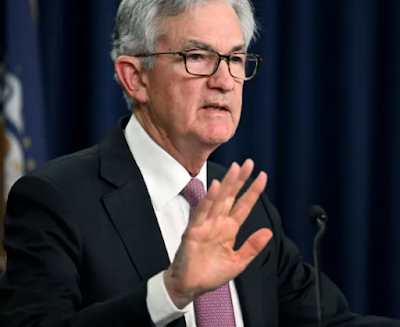The US Dollar Index bottomed on September 14, the day after QE3+ was announced. It reached a 2-month high before the weekend. It has now retraced half of the ground lost from ECB President Draghi’s pledge to “to do whatever it takes” through hints, and then delivery, of Fed’s new balance sheet expansion program. During this period, the US economy has generally out performed expectations, while the euro area underwhelmed.
While we retain a favorable outlook for the dollar, we are concerned that in the near-term, the bulls have over-reached. We note below that in the latest CFTC reporting period, the speculative community reduced the gross long positions in all the futures we look at except the Australian dollar.
The net speculative foreign currency positions were either less long or more short, with a couple notable exceptions. The bulls were still celebrating in the Australian dollar. The net speculative yen position was a quarter smaller as the market seemed to be largely caught wrong-footed as the yen slid hard just after the reporting period closed.
We
recognized that the risk-on/risk-off matrix was weakening several weeks ago, but the sharp drop in equities over the past week and a half may have lent the dollar some support. In this context, we note that the S&P 500 staged a bit of a reversal ahead of the weekend, trading on both sides of Thursday’s range, and closed higher on the day. Even if the down leg is not over, there may be follow through buying/short-covering to lift the S&P 500 back to the 1385-1390 area and this may encourage some movement back out of the dollar.
Nor are the dollar’s underlying fundamentals particularly supportive presently. The recent storm in the US is going to take the gloss off the near-term economic reports as we have already gotten a little taste of in the form of retail sales, industrial production, weekly initial jobless claims and the Philadelphia Fed survey. Minutes of the recent FOMC meeting and other comments suggest the Fed is likely to extend QE3+ after Operation Twist is complete.
With President Obama going to Asia in the days ahead, there is likely to be only posturing regarding the fiscal cliff. Lastly, many investors had hoped that Bowles would have replaced Geithner at Treasury, but reports now suggest that is unlikely. Talk suggests that Bowles wants a position that is strictly focused on the deficit–e.g., a budget czar.
To be sure, it is not as if European officials have taken advantage of the time that Draghi appears to have bought them to get closer to a resolution. Euro area finance ministers meet again (Nov 20) and while some agreement on Greece is likely, it is unlikely to be the last.
However, there are numerous flash points in the euro area and Greece is but one. Spanish bond yields rose for the fourth consecutive week last week. The Catalonian election is a week away and the only question is how big of a landslide for the secessionists? We recently reiterated and expandedon our concern about France, but recognize that it was the Economist making it the cover story that got raise the ire of the French government.
Euro: The euro spent last week consolidating the break of the $1.28 level. That level, which houses retracement objectives and the 200-day moving average (~$1.2810). However, in a larger sense the $1.28 area is also the neck line of the double top pattern (Sept 17 high ~$1.3172 and the Oct 17 high ~$1.3140). The minimum objective of the pattern is around $1.2450, which is just beyond the 61.8% retracement of the euro’s Q3 rally. The significance of the $1.28 area implies that if the euro moves above there the price action ought to be respected. Cautiously bearish.
Yen: The yen dropped 2.3% against the dollar in second half of last week, the three days after the Commitment of Traders reporting period ended. Although it seems like every one is bearish the yen, as the table below shows, during the reporting period, the trend follower and momentum market segment covered almost 20% of their gross short yen position in the futures market. The pendulum of market sentiment has swung hard, and arguably too hard. The dollar finished last week with two closes above the upper Bollinger band (set 2 standard deviations above the 20-day moving average). The last time this happened the BOJ had just intervened to buy $100 bln in a single day. Initial support is now seen in the JPY80.70-JPY80.90 area. There is much talk of demand for 2-3 month JPY83-84 dollar calls. If the driving force is expectations of the policy thrust under the new government, we doubt the market can sustain this momentum with the election still the better part of a month away. Anticipate near-term consolidation, which means flat to firmer yen.
Sterling: Although sterling fell to new 2 1/2 month lows toward the end of last week, we think the technical outlook is more constructive than that would imply. Sterling carved out a 3-day base in the $1.5825-35 area, which is just below the 200-day moving average (~$1.5852). It finished the week above the 5-day moving average (~$1,5868) for the first time since Nov 1. Initially, sterling can test the $1.5900-25 area, but the real test might not be seen until closer to $1.60. Modestly constructive, with a clear and tight stop.
Swiss franc: The dollar has been trending higher since Oct 17 when a 5-month low was recorded near CHF0.9215. Support for the dollar is seen in the CHF0.9380-CHF0.9400 area now, which also corresponds to the 20-day moving average (~CHF0.9395) and the 200-day moving average (~CHF0.9407). A move above CHF0.9500 opens the door for stronger medium-term gains. Bearish outlook, but key directional cue is from the euro.
Canadian dollar: The Canadian dollar bulls continue to move the sidelines. The US dollar hit and narrowly surpassed our CAD1.0040 objective. Although the US dollar made new highs against its Canadian counterpart Tuesday-through-Friday last week, the closes were often little changed or lower and was not confirmed by momentum indicators. The greenback looked tired at the end of the week and a break of CAD0.9980 would suggest a near-term high is in place. A move below CAD0.9945 is needed to signal a larger move may be under way. Modestly constructive, with a clear and tight stop.
Australian dollar: The Australian dollar was the only one of the currency futures we look at which saw an increase in gross speculative longs in the most recent reporting week. The market appeared to be caught leaning the wrong way because in the Aussie dropped 1.7% against the dollar in the three sessions after the period ended. Yet good buying emerged just before the weekend after the Aussie fell to 3.5 week lows against the dollar just below $1.0290. The strong close, and potential hammer in candlestick terms, helps improve the technical tone, but trapped longs may look to lighten up on follow through gains into the $1.0375-90 area. Near-term bearish outlook neutralized.
Mexican peso: The peso was struggling in the more risk averse environment as stale longs liquidated. However, the dollar seemed to trace out a top in the MXN13.26-29 area and closed on its lows before the weekend. A break now of MXN13.08 could signal losses back toward MXN12.90. Constructive outlook.
| week ending Nov 13 |
Commitment of Traders |
|
|
|
(speculative position in thousand of contracts) |
|
|
Net |
Prior Week |
Gross Long |
ChangeGross Long |
Gross Short |
ChangeGross Short |
| Euro |
-83.6 |
-67.1 |
39.9 |
-5.3 |
123.5 |
11.2 |
| Yen |
-30.4 |
-40.1 |
22.0 |
-3.0 |
52.4 |
-12.6 |
| Sterling |
8.2 |
19.3 |
45.8 |
-11.4 |
37.6 |
-0.4 |
| Swiss franc |
-8.9 |
-0.3 |
11.4 |
-2.1 |
20.3 |
6.5 |
| C$ |
66.1 |
74.8 |
75.9 |
-6.9 |
9.8 |
1.7 |
| A$ |
68.1 |
60.3 |
105.8 |
7.8 |
37.7 |
unch |
| Mexican peso |
97.0 |
114.0 |
102.9 |
-17.3 |
5.9 |
0.1 |
|
***Gross short euro positions have risen for three consecutive weeks to their largest since mid-Sept.
***There was a 20% reduction in short yen positions, just prior to the yen’s sudden drop.
***The gross long sterling position experienced the largest liquidation (% terms) in five months.
***New interest is emerging in a trending Swiss franc market with the third consecutive weekly increase in gross shorts.
***This was the eighth consecutive week in which there was no increase in the gross long Canadian dollar position.
***The gross long Australian dollar was at 2-month highs, just before the Aussie lost 1.5 cents.
***Peso bulls continue to be squeezed out and at the fastest pace since June.
Are you the author?
He has been covering the global capital markets in one fashion or another for more than 30 years, working at economic consulting firms and global investment banks. After 14 years as the global head of currency strategy for Brown Brothers Harriman, Chandler joined Bannockburn Global Forex, as a managing partner and chief markets strategist as of October 1, 2018.
Previous post
See more for 4.) Marc to Market
Next post
Tags:
Bank of Japan,
Canadian Dollar,
Commitments of Traders,
COT,
Currency Positioning,
Dollar Index,
FX Positioning,
Japanese yen,
Marc Chandler,
MXP,
Net Position,
Non-Farm,
Peso,
Speculative Positions,
U.S. Initial Jobless Claims








































